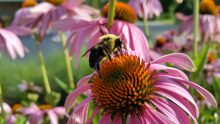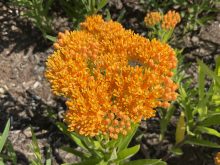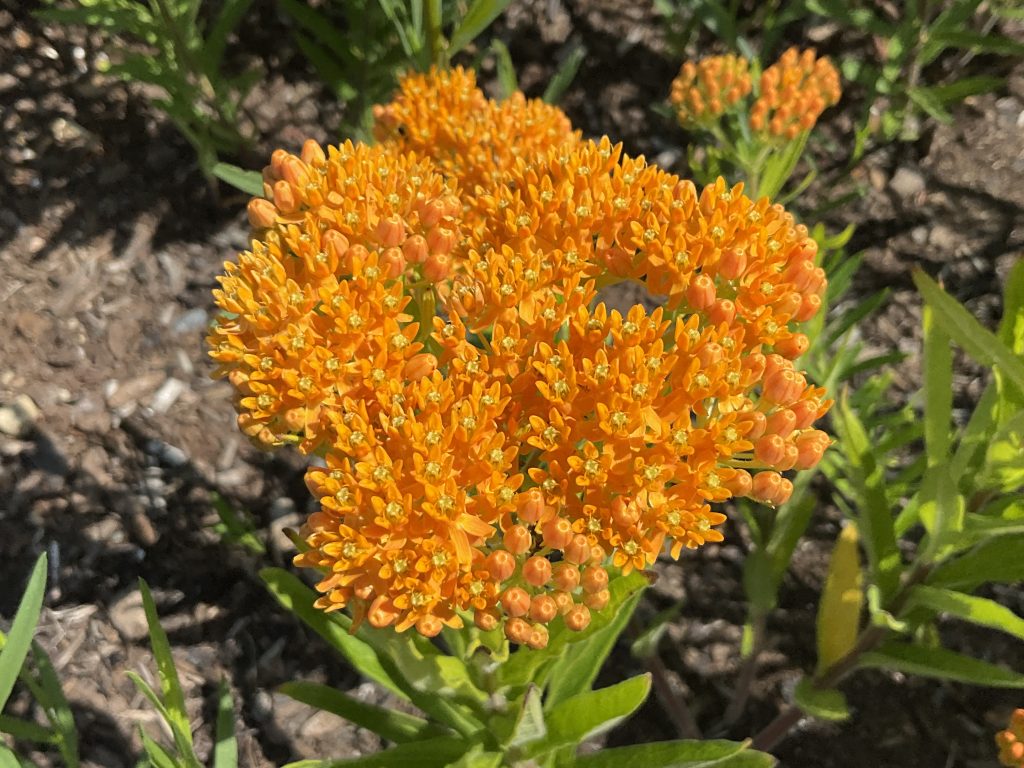With all the buzz around bees, it can be easy to overlook other essential pollinators and insects that share our garden spaces. Beetles, flies, wasps, and spiders are just a few of the more hidden beneficial arthropods that may be found in your space. Though pollination is a crucial contribution of these insects, pollinators form just one level of the garden ecosystem. We can also plant and landscape to create habitat for predators, reducing the need for chemical pesticides. Together with the charismatic bees and butterflies, these critters support any managed ecosystem.
Plants and Practices for Beneficial Insects
Flowers and insects have co-evolved for millions of years; the first flowers appeared before the first bees. These systems, however, have been thrown out of balance. Insect populations are crashing around the world, and with their loss, the base of the food chain faces significant instability. Fortunately, due to the size of insects, we can have an outsized impact on their population with minimal action and limited space; something as simple as a window box in a landscape design can increase habitat.
Ecological horticultural practices sometimes seem at odds with traditional design and aesthetics. However, there are easy ways to merge the best of all worlds. Here are some options:
- Wait until spring (or longer) to do yearly cleanups. Winter snows hide most of the standing stems, and after we receive three or more 50-degree days in the spring, most of our beneficial insects will have emerged.
- If leaving the stems whole does not work with your spaces or clients’ expectations, cutting stalks to between 15 and 24 inches will preserve their use for many overwintering species!
- If cutback is your only option in Autumn, use the cut stems to build up a tidy pile framed by three sturdy 0.5”-1” thick sticks/rods placed in a sunny, out-of-the-way spot. This method can be as effective as leaving garden stems in place.
- Leave leaves in garden spaces in place as much as possible over winter. Waiting until a good spell of warm spring weather returns to clean up will ensure plenty of overwintering habitat for our native bumblebees!
In addition to making the habitat we already have friendlier for insects, we can also include what these organisms need to thrive when creating new spaces. At their heart, there are four things that all organisms need in an environment: food, water, shelter, and space. In gardens and other managed landscapes, food is often the easier one of these to provide. Flowers, leaves, fruit, and each other are all plentiful food sources for insects. Water can be more difficult to supply. Natural sources of water nearby can provide much of what insects need, and something as simple as a bird bath filled with marbles or rocks can give insects plenty of water and perches to get up and out of it as needed.
The most productive areas of ecosystems are where two or more meet, and the edges of landscapes can be perfect for garden beneficials. By leaving a border of un-mowed or treated grasses, we form a refuge for many predatory species, a shelter they can leave and hunt for those pesky pests we do not want around. Natural ecosystems are mixed; grassy clumps, pithy stems, and woody growth all intermix to create a varied and heterogeneous environment filled with unique microhabitats and niches for insects and other invertebrates to take full advantage of.
Plant selection will have the greatest impact on beneficial arthropod diversity, and there are a few that are stand-out favorites here in Maine: Eutrochium, specifically E. fistulosum and E. maculatum are excellent choices for their large study stems, which supply ample overwintering habitat and clusters of blooms are tremendously attractive to native bees and hoverflies. The tightly bunched growth habit of many asters ensures plenty of warmer spaces within for spiders (the top predator of many gardens) to shelter for the colder months of the year. Hydrangea arborescens provide nectar to an enormous variety of pollinators, and the woody growth also adds variety to the landscape, creating microhabitats. Milkweeds, goldenrods, and coneflowers are all excellent choices as well; not only do they contribute flowers for feeding and stems for nesting, but they are also hosts to specialist species of insects that cannot be found anywhere else!
If you’re interested in learning more about this subject, especially what research has established so far about the plants to use to support pollinators, contact Irene Barber, Adult Education Program Manager, ibarber@mainegardens.org, to purchase a video recording from a recent presentation by Zac Smith-Hess.
Coastal Maine Botanical Gardens presents the four-session, online class Resilient Landscapes in Built Environments: Design and Structural Components beginning February 13, 2024. To learn more about this course and the MELNA-partnered series, The Green Spotlight Series, an online lecture series for landscape and horticulture professionals, go to https://www.mainegardens.org/learn/learning-for-adults/adult-classes/.
 Echinacea purpurea
Echinacea purpurea
 Asclepias tuberosa
Asclepias tuberosa

